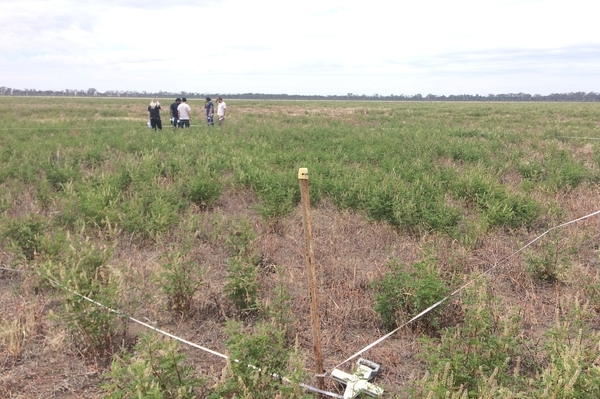To enhance ecological outcomes and cultural values we’ve ‘Boort’ together all the great minds!
The Dja Dja Wurrung Clans Aboriginal Corporation (through Djandak) and North Central CMA are conducting vegetation monitoring and undertaking planting at the culturally significant Lake Boort site on the Loddon River floodplain.
A highly-significant area for Dja Dja Wurrung, this floodplain not only contains some of the highest densities of scarred trees in the world but numerous cooking mounds and other reminders of past productivity. This connection continues through to this day and is embedded in the plants, animals, Gatjin (water), Wi (fire) and Djandak (land). The vegetation monitoring program looks to inform the recovery of this landscape and its bountiful resources.
With funding from the VEWH to support the project, Dja Dja Wurrung and ecologists have collected plant surveys and recorded incidental animal observations such as frog, mammal, reptile and bird sightings. The project is a great example of Dja Dja Wurrung and western scientists continuing to share knowledge.
Nathan Wong, Natural Resource Program Manager at Djandak, says “Involving Dja Dja Wurrung in monitoring not only allows for people to share knowledge but also increases the understanding of the wetland system.”
“It is amazing to see through the monitoring that healing of Lake Boort is occurring and that the greater involvement of Dja Dja Wurrung is delivering this change. By working together, we will succeed and create lasting change in the landscape,” Nathan said.
While Gatjin can be distributed to the Boort wetlands using Loddon Valley Irrigation Infrastructure, the current environmental water management plan for Lake Boort involves long drying phases to mirror a more natural wetting and drying cycle and is consistent with the aspirations of Dja Dja Wurrung.
Kevin Mah, Environmental Water Reserve Officer at North Central CMA, said “We’re really pleased to be working with Dja Dja Wurrung at Lake Boort. Working with the Traditional Owners has helped build our understanding of the site, and has allowed us to share knowledge about managing this important wetland into the future.”
“Wetlands like Lake Boort need both wet and dry phases. As the wetland begins to dry vegetation species such as southern cane grass and common spike-sedge that grow and establish at wetland sites. The receding water levels also provide habitat and feeding opportunities for wading waterbird species including the little egret, which is critically endangered in Victoria.”

Dja Dja Wurrung mapping out quadrats for vegetation monitoring at Lake Boort, by Damian Cook